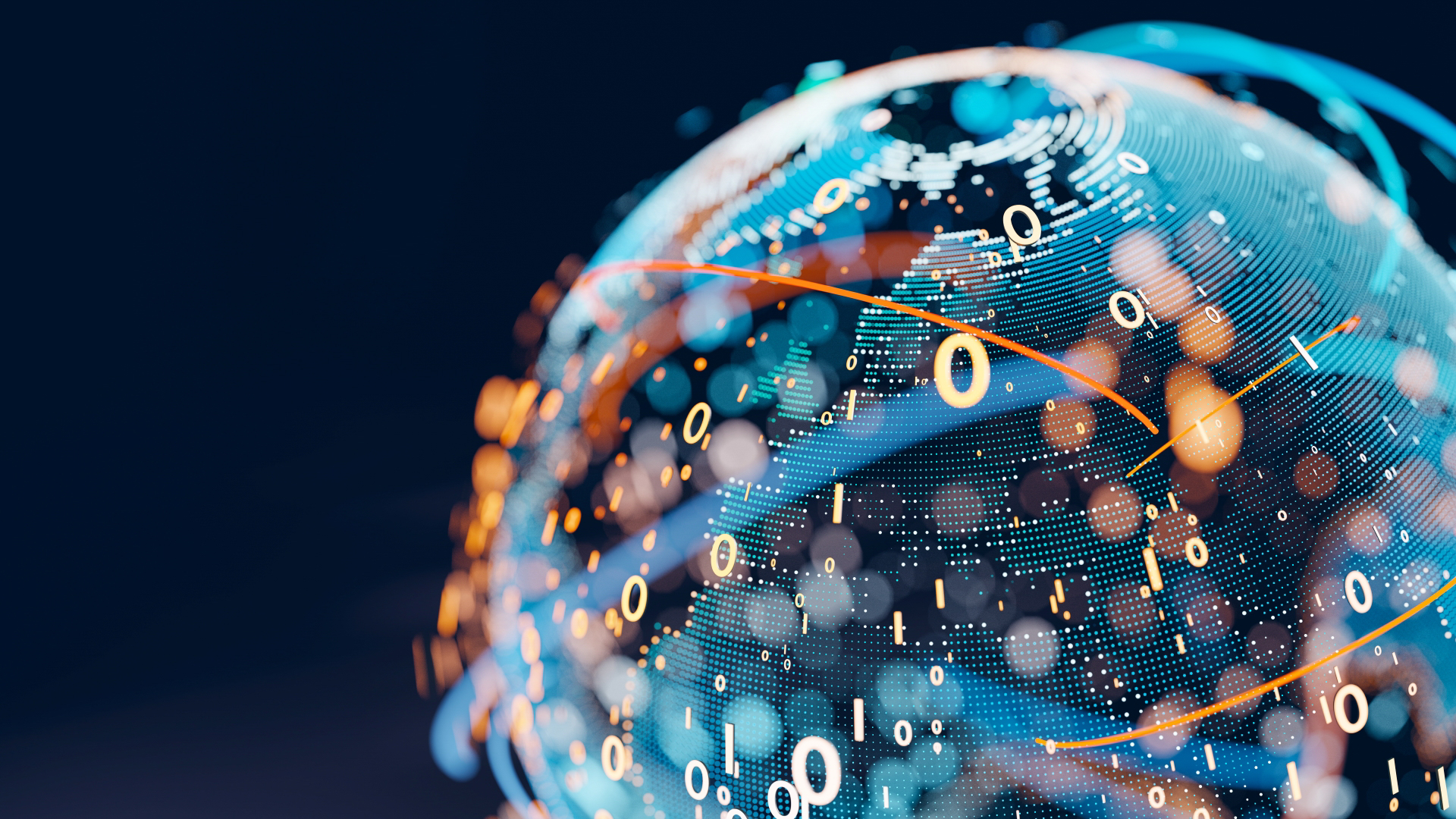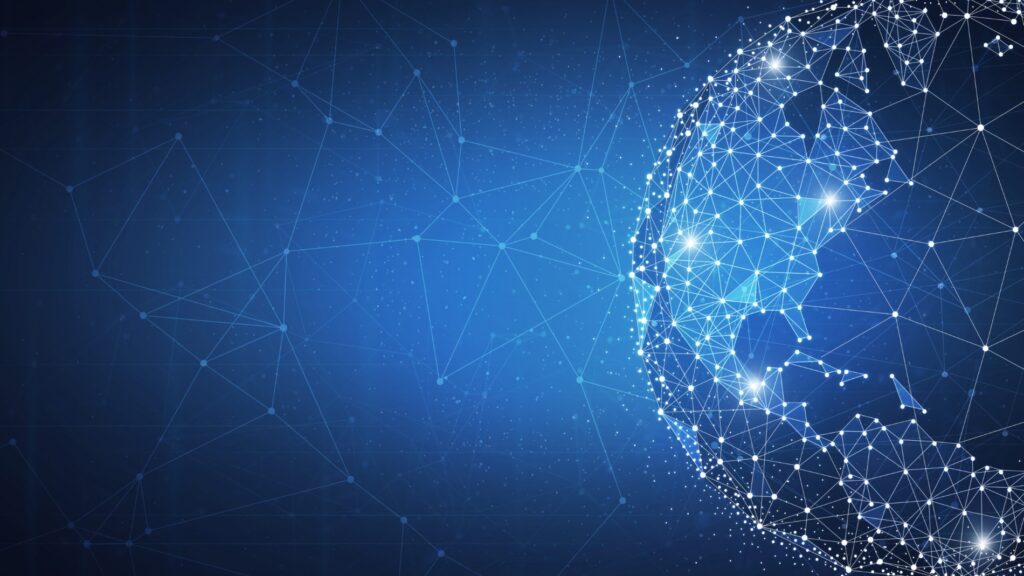How the Head of Business Development for Latin America at the Global Legal Entity Identifier Foundation (GLEIF) is helping embed LEIs into Latin America’s trade systems – connecting policy, platforms, and digital identity to drive adoption.
International trade today runs on more than goods and logistics, it requires trust. In a digital-first economy, trust begins with knowing exactly who you’re doing business with.
The Legal Entity Identifier (LEI), a global ISO standard, facilitates this by providing a unique, verifiable identity for companies involved in cross-border transactions.
Nuria Vegas is the Head of Business Development for Latin America at GLEIF, where she leads efforts to scale LEI adoption across Latin America. Her role is focused on embedding trusted digital identity into the infrastructure of international trade – integrating LEIs into national e-invoicing frameworks, customs systems, KYC processes, and digital trade platforms.
She works across public and private sectors, collaborating with government agencies, banks, business registries, and business organisations like the International Chamber of Commerce (ICC) and the Inter-American Development Bank.
Whether she’s aligning digital trade policy with technical standards, integrating LEIs into e-invoicing and customs platforms, or partnering with regional associations to raise awareness, Nuria’s goal is clear: to make LEIs a core building block of digital trade infrastructure.
In this alumni interview, she explains why that matters, how adoption is progressing, and what it will take to turn a global standard into global practice.
Inside the role: Enabling trust in digital trade
“How does this role connect to digital transformation in global trade?“
Hi Nuria, can you explain what an LEI is and GLEIF’s mission is?
LEI stands for Legal Entity Identifier. It’s a globally recognised ISO standard used to uniquely identify parties involved in transactions – think of it like a passport for businesses.
Just as a passport is universally recognised and contains standardised information, an LEI provides a common, global reference for identifying legal entities across jurisdictions.
The Global Legal Entity Identifier Foundation (GLEIF) is a non-profit global organization established by the Financial Stability Board that helps uniquely identify companies involved in financial transactions through the Legal Entity Identifier (LEI). Each LEI links to verified business information in a free public database, the Global LEI Index.
GLEIF promotes transparency and trust in global markets and has also introduced the verifiable LEI (vLEI) for secure digital identity. It is overseen by the Regulatory Oversight Committee (ROC), a group of public authorities from over 50 countries. LEIs are issued by GLEIF-accredited organizations that handle registration and updates.
If a company wants to get an LEI, they go through an LEI Issuer. These issuers are accredited by GLEIF and provide services like registration, renewal, and updates.
How does GLEIF’s mission translate into your day-to-day work?
GLEIF’s mission is straightforward: to build trust in the global marketplace by making verified identity accessible to everyone involved in business transactions. In practical terms, that means helping companies take part in the digital economy in a way that’s both secure and trusted. To do that, businesses need to be recognized across borders – and just as importantly, they need to be able to verify who they’re dealing with.
In day-to-day terms, that mission means a lot of collaboration – across sectors, industries, and borders. Since we’re a global organisation, my work is very diverse.
I spend a significant amount of time engaging with stakeholders from both the public and private sectors – including governments, businesses, and digital platforms. A big part of my role is about building bridges between these groups, shaping strategy, and showing how LEI can make global trade faster, safer, and more efficient.
What does LEI adoption currently look like across Latin America, and how are you approaching the region’s key challenges and opportunities?
I’ve worked with Latin America for many years, but as part of our current strategy, my focus is squarely on expanding LEI adoption across the region. Adoption is growing, but unevenly. Major banks and financial centres are moving ahead, while smaller businesses and emerging markets are still catching up.
The biggest challenge is awareness. Many companies and institutions are unaware of what the LEI is or how it can benefit them.
On the other hand, the opportunity is massive. Latin America is undergoing a significant digital transformation – initiatives such as e-invoicing and digital trade corridors are gaining momentum across the region – and the LEI aligns perfectly with that shift. It helps standardise identity across borders and platforms.
Because it’s such a large and diverse region, we can’t approach it company by company. Instead, we’re working through key partner organisations. One of the most important is the International Chamber of Commerce (ICC). It’s highly respected in Latin America and plays a major role in connecting us with local companies. We collaborate with ICC National Committees like ICC Argentina, ICC Mexico, ICC Colombia, and ICC Brazil.
We’re also working with other key partners like the Inter-American Development Bank and ASORLAC, the association of business registries in Latin America and the Caribbean. These associations are essential for raising awareness. Beyond that, we engage directly with financial institutions – often through their own associations, such as FELABAN (La Federación Latinoamericana de Bancos – and of course, with governments.
How does this role differ from a standard business development role? Is there any part of your daily work that’s crucial but might surprise people?
Yes, I think people might be surprised by how many different sectors we touch. One day I might discussing e-invoicing, the next ESG, and then customs, but it all comes back to the same core idea: digital identity and how we identify companies in various transactions.
The LEI is like a puzzle piece. Once it’s in place, it enables other pieces – other systems and use cases – to connect more effectively. So, it’s not just about promoting the LEI.
It’s also about challenging existing systems and asking how we can make them faster, more transparent, and more interoperable.
What often surprises people is how much time we spend working with governments and standards bodies. We’re not just selling a solution; we’re helping shape the frameworks for a more digital, connected economy. It’s about meeting today’s needs while also building toward where we want to be in a few years. We want to be part of that long-term conversation.

Certificate in Digital Trade Strategy (CDTS)
LEIs around the world: Driving global interoperability
“What’s the current global picture when it comes to LEI adoption?“
Are there are standout use-cases where LEIs have become critical to trade of financial transparency?
The 2008 Lehman crisis demonstrated how the inability to clearly identify parties to financial transactions across borders and systems inhibited efforts to understand and evaluate emerging systemic risks. In response, the Legal Entity Identifier (LEI) was introduced to bring greater transparency, trust, and efficiency to global markets. Today, its benefits extend well beyond regulatory compliance, unlocking value across both public and private sector ecosystems.
One clear use case is KYC (Know Your Customer) process. Whether it’s e-invoicing platforms or electronic bill of lading systems, KYC is essential. If a company has an LEI, the process becomes faster, less manual, and far less prone to errors – especially false positives when identifying entities.
Each time the LEI is utilized in a new business identification use case, the value delivered to all ecosystem participants compounds, and the world moves another step closer to achieving the universal visibility and traceability needed to eliminate corporate fraud.
Given the increasing need for global transparency and identifiability, there is growing industry momentum for the use of the Legal Entity Identifier (LEI) and its digital counterpart, the verifiable LEI (vLEI), in cross-border ecosystems.
For example, sometimes company names are in different languages or scripts, like Chinese, and can be mistranslated or confused with similar names. With an LEI, you eliminate that ambiguity.
It’s a unique, standardised code that ensures you’re identifying the right legal entity every time.
LEIs as a tool for digital trade
“What problems do LEIs solve – and how?“
In what ways are LEIs being used to support the digitisation of trade finance or supply chain transactions?
LEIs are being linked to electronic documents like invoices and bills of lading, turning traditional paperwork into verifiable digital assets. This makes it easier to confirm the identity of parties involved, which speeds up financing, reduces manual checks, and helps clear bottlenecks in trade transactions.
Standards, compliance, and transparency
“Why is business development in this space about more than just growth?“
GLEIF sits at the intersection of transparency, regulation, and business – how do you communicate the value of legal entity identifiers to diverse stakeholders?
We keep the message simple: the LEI builds trust, cuts costs, and unlocks new opportunities. Whether you’re a regulator, a bank, or a trader, everyone benefits from trusted organisational identity.
As a nonprofit, neutral, and technology-agnostic organisation, we provide the underlying infrastructure that connects different parts of the system. We’re not in it for profit; we’re here to make global transactions more transparent and efficient.
The LEI is a public good and that principle has guided its design from the start. We’re committed to keeping it that way.
That being said, awareness remains a challenge. To make the LEI a truly global identifier, we need to bring it into more conversations, especially in regions and sectors where it’s not yet widely used. Scaling adoption across all types of companies and geographies is essential if we want the LEI to reach its full potential.
You’ve completed ICC’s Export/Import certification (EIC) – how has that training influenced how you approach business development from a compliance-aware perspective?
The Export/Import certification provided me with a solid foundation in the key concepts of international trade – who the main players are, how the system works, and why certain details matter. It gave me a real-world view of trade complexity. That’s why it’s important to connect innovation with compliance – digital solutions must work in the real legal and regulatory environment.
Trade is a complex field, but by understanding the basics, like Incoterms® and documentation requirements, you can avoid misunderstandings between parties. It also helps me position LEIs more effectively.
If I understand the problem from a stakeholder’s perspective, I can clearly show how the LEI can solve it. Without that understanding, it’s hard to offer real value or be part of the solution.

Export/Import Certificate (EIC)
The future of trade identity
“What’s next for LEIs and digital trust in trade?“
How do you see the role of LEIs evolving in the next 5 to 10 years as a digital trade infrastructure matures?
The future of trade depends on trusted digital identity – being able to reliably identify the right company and prevent fraud or identity misuse. That’s where we see the LEI evolving, especially through the introduction of the verifiable LEI (vLEI).
The vLEI is essentially a digital twin of the LEI. It enables real-time, cryptographically secure identity verification, which will be crucial as trade becomes increasingly digital. We believe the vLEI will play a key role in the next generation of trade infrastructure, helping build a more secure, efficient, and trustworthy global system.
What would success look like for LEIs in global trade – what’s the vision you’re working toward?
Success would be making the LEI as natural and essential as having a website domain. Just like a company needs a website to be visible online, it should need an LEI to be visible and trusted in global markets.
The goal is universal, automatic trust in trade. With an LEI, anyone anywhere in the world, can instantly verify that a company is real, validated, and trustworthy. That level of transparency makes cross-border business faster, safer, and more accessible for everyone involved.

Certificate in Digital Trade Strategy (CDTS)
Advice for future global trade leaders
“What can others learn from your journey?“
What advice would you give to professionals looking to shape the future of global trade through digital innovation and standards?
Learn both the technology and the rules. Innovation only works when it fits into real-world systems, and to change those systems, you first need to understand them.
Both aspects are equally important. That’s also what makes GLEIF’s model so effective: it brings regulators and the private sector together in one ecosystem. Bridging those two worlds is key to creating solutions that are not only innovative, but also practical and scalable.
What qualities or skills do you think will define the next generation of leaders in digital trade and regulatory transformation?
Curiosity is essential – you must keep learning, because things are constantly evolving. Openness to new ideas and continuous learning is key.
Collaboration is also critical. No one can drive transformation alone. That’s why platforms like the ICC are so valuable – they connect people across sectors and regions.
Clear communication is another must. Even when we speak the same language, meaning can vary between industries, countries, and cultures. Being able to communicate clearly and connect across those boundaries is vital.
And finally, leadership is about inspiration. If you can clearly communicate a vision and inspire others, they’ll follow you. That’s what truly drives change.





